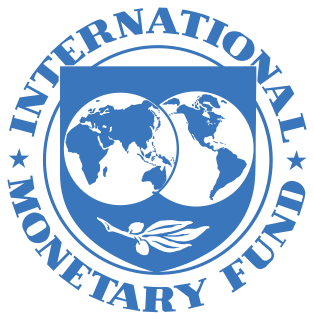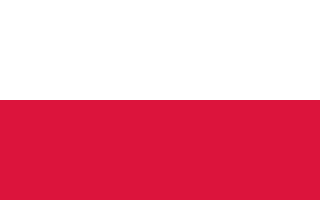
The International Monetary Fund (IMF) is an international organization, headquartered in Washington, D.C., consisting of 189 countries working to foster global monetary cooperation, secure financial stability, facilitate international trade, promote high employment and sustainable economic growth, and reduce poverty around the world while periodically depending on the World Bank for its resources. Formed in 1944 at the Bretton Woods Conference primarily by the ideas of Harry Dexter White and John Maynard Keynes, it came into formal existence in 1945 with 29 member countries and the goal of reconstructing the international payment system. It now plays a central role in the management of balance of payments difficulties and international financial crises. Countries contribute funds to a pool through a quota system from which countries experiencing balance of payments problems can borrow money. As of 2016, the fund had XDR 477 billion.
Special drawing rights (SDRs) are supplementary foreign exchange reserve assets defined and maintained by the International Monetary Fund (IMF). SDRs are units of account for the IMF, and not a currency per se. They represent a claim to currency held by IMF member countries for which they may be exchanged. SDRs were created in 1969 to supplement a shortfall of preferred foreign exchange reserve assets, namely gold and U.S. dollars. The ISO 4217 currency code for special drawing rights is XDR and the numeric code is 960.
A reserve currency is a foreign currency that is held in significant quantities by central banks or other monetary authorities as part of their foreign exchange reserves. The reserve currency can be used in international transactions, international investments and all aspects of the global economy. It is often considered a hard currency or safe-haven currency.
The Group of Ten refers to the group of countries that agreed to participate in the General Arrangements to Borrow (GAB), an agreement to provide the International Monetary Fund (IMF) with additional funds to increase its lending ability.
The Bretton Woods system of monetary management established the rules for commercial and financial relations among the United States, Canada, Western European countries, Australia, and Japan after the 1944 Bretton Woods Agreement. The Bretton Woods system was the first example of a fully negotiated monetary order intended to govern monetary relations among independent states. The chief features of the Bretton Woods system were an obligation for each country to adopt a monetary policy that maintained its external exchange rates within 1 percent by tying its currency to gold and the ability of the International Monetary Fund (IMF) to bridge temporary imbalances of payments. Also, there was a need to address the lack of cooperation among other countries and to prevent competitive devaluation of the currencies as well.
Foreign exchange reserves are cash and other reserve assets held by a central bank or other monetary authority that are primarily available to balance payments of the country, influence the foreign exchange rate of its currency, and to maintain confidence in financial markets. Reserves are held in one or more reserve currencies, nowadays mostly the United States dollar and to a lesser extent the euro.
The Exchange Stabilization Fund (ESF) is an emergency reserve fund of the United States Treasury Department, normally used for foreign exchange intervention. This arrangement allows the US government to influence currency exchange rates without directly affecting domestic money supply.
The Triffin dilemma or Triffin paradox is the conflict of economic interests that arises between short-term domestic and long-term international objectives for countries whose currencies serve as global reserve currencies. This dilemma was identified in the 1960s by Belgian-American economist Robert Triffin, who pointed out that the country whose currency, being the global reserve currency, foreign nations wish to hold, must be willing to supply the world with an extra supply of its currency to fulfill world demand for these foreign exchange reserves, thus leading to a trade deficit.

The bancor was a supranational currency that John Maynard Keynes and E. F. Schumacher conceptualised in the years 1940–1942 and which the United Kingdom proposed to introduce after World War II. The name was inspired by the French banque or. This newly created supranational currency would then be used in international trade as a unit of account within a multilateral clearing system—the International Clearing Union—which would also have to be founded.

In the foreign exchange market and international finance, a world currency, supranational currency, or global currency is a currency that is transacted internationally, with no set borders.
The Financial Transactions Plan of the International Monetary Fund is the mechanism through which the Fund finances its lending and repayment operations, to its members, in the General Resources Account. It was formerly called the operational budget.
India has large foreign-exchange reserves; holdings of cash, bank deposits, bonds, and other financial assets denominated in currencies other than India's national currency, the Indian rupee. The reserves are managed by the Reserve Bank of India for the Indian government and the main component is foreign currency assets.
In 1945, China cofounded the International Monetary Fund (IMF) with 34 other nations. In April 1980, the People's Republic of China, established a formal relationship with the IMF. The Chinese-IMF relationship mainly operates around affairs associated with IMF governance and the IMF Special Drawing Rights (SDR).
Tanzania is a member of the International Monetary Fund (IMF) with a current quota of US$551.35 million, and is a part of the South Africa and Nigeria led constituency with a totaling voting share of 2.97%. The IMF has been involved in Tanzania's economy since the 1970s. Over the years, there have been roughly three stages of the IMF's involvement in Tanzania: the first round of reform lasted from 1986 to 1995, the second round of reform lasted from 1996 to 2006, and the third round focused mainly on consolidating the reforms made from previous stages.
The International Monetary Fund (IMF) has operated in Malawi since 1965.
Jamaica joined the International Monetary Fund (IMF) in February 1963 under the leadership of The Rt. Hon. Sir Alexander Bustamante, one year after the country's independence. From 1963 to 1966, Rt. Hon. Sir Donald Sangster served as Jamaica's governor to the IMF and World Bank, and represented Jamaica during delegations held at the IMF and World Bank's Washington D.C. headquarters. In 1963, the IMF made its first loan to Jamaica ever, in the amount of 10 million SDR's. In 1967, Sir Donald Sangster was elected as Jamaica's second Prime Minister, simultaneously serving as Minister of Finance and Minister of Defense.

Poland was one of the founding members of the International Monetary Fund (IMF) in 1945. Under pressure from the Soviet Union, the country withdrew in 1950, believing that the organization had become a tool for the United States. Poland rejoined the IMF in 1986, following the end of martial law in Poland (1981–1983) and the withdrawal of the US veto against Polish membership.
The Islamic Republic of Iran and the IMF have been in partnership since 1945.The IMF was established in 1944 during the Breton Woods Conference in the United States. The IMF has three main goals, those of which include: surveillance, lending, and technical assistance. Surveillance comes in a multifaceted approach on the economies of the nations it surveils. The IMF monitors the economies of its respective constituent nations and also delivers policy memos in order to stabilize the economies. The IMF issues short-term loans typically directed at the balance of payments of a nation. Other loans given are for the correction of an underlying issue within a nation or for poverty stricken nations to jumpstart their respective economies. The IMF has 189 member nations, and all of the member nations participate in the IMF by paying a quota. The quota is assessed through an analysis of the GDP of a country. The richer the country, the larger the quota. In order to accomplish tasks within the IMF, bankers, government officials, and CEOs/CFOs of major corporations work in tandem. Of the countries involved there are 24 executive directors. Executive directors are chosen by the country which has the most voting power within its respective groups.Hence, the countries within the group that have the most economic power carry the vote for their entire grouping. Most importantly the IMF is often described as the 'lender of last resort'. The Islamic Republic of Iran has only gone to the IMF on 2 occasions, both occurring before the 1979 revolution of Iran.
International Monetary Fund (IMF) is an international organization whose main tasks involves bringing countries together to allow for international monetary cooperation. This article describes the relationship between Morocco and the IMF since it joined in 1958. It also highlights some achievements and planned projects.



